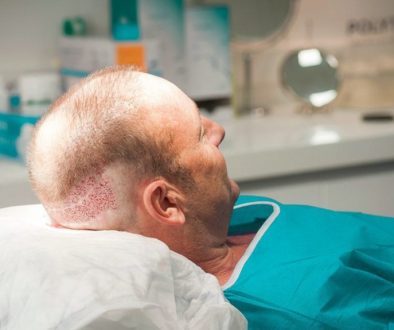Hair Transplant: Do Needles or Blades Cause Less Scalp Trauma?
I have noticed that of hair transplant photos posted where needles are used instead of blades to make recipient sites for the transplanted hair, there appears to be MUCH more redness. The redness also seems to last longer post-op. Is this because the needle hair transplant doctor is transplanting hair at greater hair density or does the needle cause more scalp trauma?
This question was posed by a hair loss sufferer on our hair restoration forum and answered by Ailene, a member of our hair transplant community and personal assistant for Dr. Jerry Cooley of Charlotte, NC who is a member of the Coalition of Independent Hair Restoration Physicians.
Blades versus Needles in Creating Recipient Sites in the Balding Areas in order to Transplant Hair
 Our hair transplant clinic has used both needles and blades for many years. In a large number of hair transplant patients, we have used both and see no difference in postoperative healing or redness. When patients come back in for followup when the hair is growing in, there is no difference in the appearance of the hair in blade areas compared to needle areas.
Our hair transplant clinic has used both needles and blades for many years. In a large number of hair transplant patients, we have used both and see no difference in postoperative healing or redness. When patients come back in for followup when the hair is growing in, there is no difference in the appearance of the hair in blade areas compared to needle areas.
For hair grafting in hairless or shaved areas, we prefer the blades which we custom cut depending on the width and depth of the follicular unit grafts. Since most of our hair restoration patients do not want us to shave their heads and expect to be back at work in a week, we are often grafting into areas with significant amounts of natural hair. For this, we prefer the needles because the sharp point can be directed precisely and the larger caliber of the needle ‘pushes’ the hair apart, minimizing the risk of hair transplant shock loss. We use different size needles ranging in size from 19 gauge being the largest and 22g or 23g be the smallest.
Whether using blades or needles, technique and sharp instruments are critical. When making the recipient sites with either instrument, it should feel like cutting through butter (I am told) and the depth should be controlled. We use a very sharp brand of needles which is much sharper than the standard brand an more expensive but worth the price. This is what determines scalp trauma and post-op healing, not whether it is made with a needle or a blade. If any resistance is felt, the blade or needle should be switched out for a fresh sharp one. Anyone who has assisted in a hair replacement procedure and has slivered or cut knows that blades and needles will dull very quickly. This is caused by the tissue and the fluid they are subjected to.
We like having the option of using blades or needles (or both) to customize our technique for each hair transplant patient. I hope this helps.
Ailene
—
Bill
Associate Publisher
Technorati Tags: hair transplant photos, transplanted hair, hair transplant doctor, transplanting hair, hair density, Balding, Transplant Hair, hair transplant clinic, hair transplant patient, hair grafting, follicular unit grafts, hair restoration, natural hair, hair replacement



